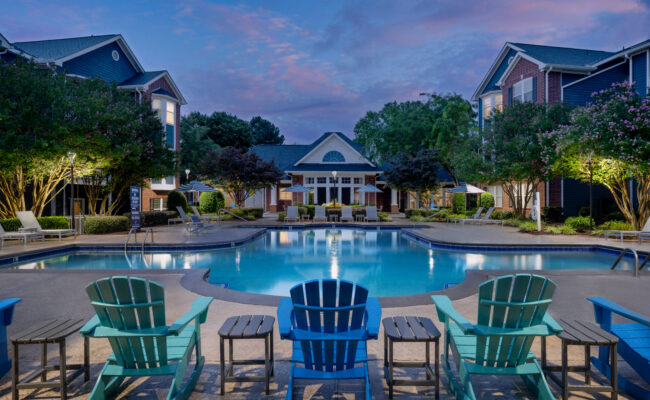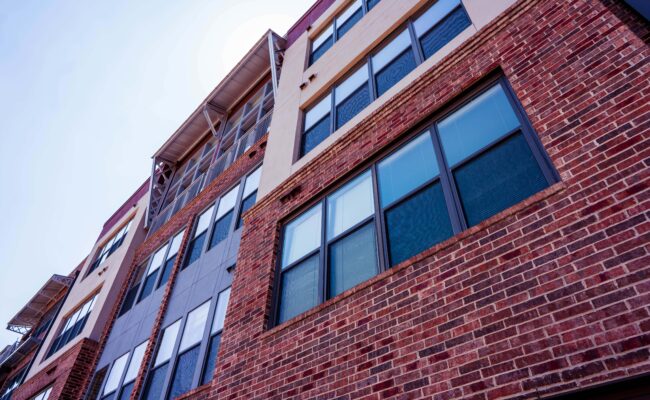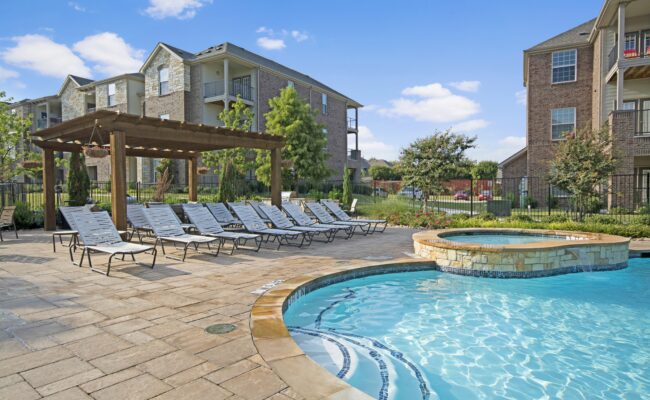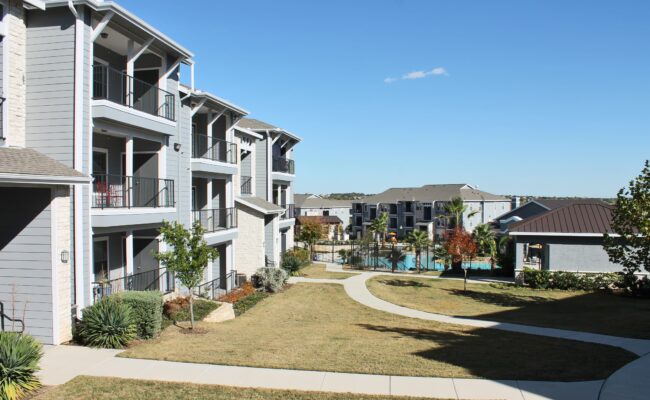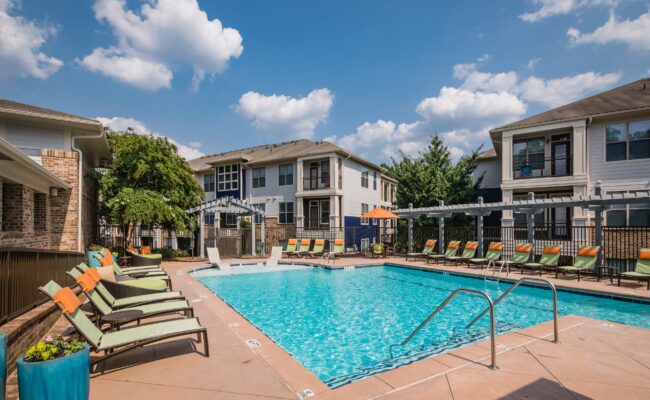Investing in multifamily real estate or large apartments used to be exclusively the territory of institutional investors and the ultra-wealthy. However, over the last two decades, these investments have become more accessible to individual accredited retail investors.
There are many good reasons why these individuals should consider investing in multifamily real estate. However, their lack of familiarity with this asset class often stands in the way. For that reason, we’ve created this guide to pull back the curtain to the subject of investing in apartments.
Table of Contents:
- What is Multifamily Real Estate?
- What are the Benefits of Multifamily Real Estate Investments?
- Considerations When Investing in Multifamily Real Estate
- Working with the Professionals at 37th Parallel to Build Your Portfolio
What is Multifamily Real Estate?
If you’re a mortgage banker specializing in multifamily originations then the definition is easy. To them, five units or more is considered multifamily. Sometimes you’ll hear them describe it as commercial multifamily real estate (CMRE). They consider four units or less to be residential real estate. The terms for financing are very different for residential real estate than they are for commercial multifamily real estate.
For the 99.9% of us who aren’t bankers, multifamily real estate is any resident-occupied real estate property that is made up of more than one unit.
Examples of Multifamily Real Estate
As easy as that definition is, you need to be aware of various classifications of multifamily real estate.
Apartment Complexes and Buildings
If investing in multifamily real estate is your goal, then the pinnacle is to invest in large apartment complexes. And the larger you go, the more stable they tend to become.
The economies of scale that come with large apartments afford the investor some of the best lending terms including non-recourse debt. They also attract professional onsite property management that get bulk buying discounts they can pass on to the investor.
In this category of apartments, the building(s) typically come in one of three varieties. They are high-rise buildings, mid-rise buildings, and garden-style (low-rise) apartment complexes.
High-rise multifamily buildings are ten floors and higher. They tend to be the housing solution for metropolitan areas that are densely populated and have limited land space.
Mid-rise apartments are typically 5-9 floors in height. They are seen in both urban and suburban areas. Like high-rise apartments, they share central heat and air, a common entry area, elevators, and interior hallways.
Garden-style apartments are often seen in suburban areas with large lots of land. They usually aren’t any larger than three floors in height and often have individual HVAC systems with front doors that open to the outside instead of an interior hallway.
Rental Properties: Duplexes and More
When investing in multifamily real estate, some people choose smaller properties as their first investment property. That’s not necessarily wrong, but it comes with limitations. For example, these smaller properties qualify for residential debt. That typically means they aren’t eligible for non-recourse debt. Therefore, the investor has to personally guarantee the loan. Should they default, the bank can come after their assets to make themselves whole.
That creates extra liability for the investor. It also weighs on their credit. In other words, these loans show up on their personal credit report which makes them subject to debt-to-income ratio limitations. That limits the amount of debt they can assume, which limits the number of properties they can purchase.
In this category of properties, there are duplexes (2-units), triplexes (3-units), and quads (4-units). These are other examples of low-rise multifamily apartment complexes.
Are Multifamily Properties a Good Investment?
If you study the ways in which millionaires and billionaires make their fortunes, you’ll find that the top two paths are entrepreneurship (starting your own business) and real estate investing. Real estate has long been the favored investment for so many.
“Real estate cannot be lost or stolen, nor can it be carried away. Purchased with common sense, paid for in full, and managed with reasonable care, it is about the safest investment in the world”
-Franklin D. Roosevelt, 32nd President of the United States
“Ninety percent of all millionaires become so through owning real estate. More money has been made in real estate than in all industrial investments combined.”
-Andrew Carnegie, billionaire
Real estate is one of the three largest categories of investing (stocks, bonds, and real estate) and a proven pathway to wealth creation. Investing in multifamily real estate is particularly attractive. And in the next section, we’ll discover why.
What are the Benefits of Multifamily Real Estate Investments?
The benefits of investing in multifamily real estate are plentiful and compelling. For the purposes of this guide, I want to focus on just eight of these advantages.
- Low risk / Low volatility
- Recession resistant nature
- Solid returns and the creation of passive Income
- Favorable demographics
- Availability and advantages of commercial lending
- The ability to scale
- The opportunity to invest fractionally
- The tax benefits
Multifamily Real Estate Provides a ‘Safe’ Investment Opportunity
All investments have risk, but they don’t all have the same risk. Some investments are riskier than others. So the ideal investment would maximize returns while minimizing risks. Commercial multifamily real estate closely approximates that ideal scenario.
There are three ways to evaluate the risk of apartment investments.
- 60-day delinquency rates
- Sharpe ratio
- Volatility (standard deviation)
One can look at absolute failure as represented by 60-day delinquency rates. The Mortgage Bankers Association tracks 60-day delinquency rates on multifamily mortgages as this number closely approximates the foreclosure rate. One can also look at the Sharpe ratio which is a measure of risk-adjusted return. The higher the Sharpe ratio, the better the investment. And lastly one can look at the standard deviation of returns an investment has over time. The higher the number, the more volatile the asset is.

MBA (Mortgage Bankers Association)
As you can see from the above graphs, multifamily properties adhering to the conservative underwriting standards of Freddie, Fannie, and Insurance Company debt have very low 60-day delinquency rates. In fact, these properties peaked in the early 1990s at around 7%. After that, they steeply declined and have spent more than 20 years below 1%.
As for the Sharpe ratio and standard deviation (volatility) of direct real estate, the asset management company Nuveen has looked at that. They compared the performance in terms of total returns, standard deviation, and Sharpe ratio of five different asset classes. Those asset classes were U.S. Equities (U.S. stocks), Non-U.S. Equity (foreign stocks), U.S. Bonds, Direct Real Estate, and REITS. Their research spanned a 20-year period that ended December 31, 2020. The results are reported below.

Citation to Nuveen, LLC
As you can see in the table, direct real estate has high total returns, low volatility, and the best Sharpe ratio or risk adjusted return.
Multifamily Sectors Have Remained Strong During Economic Uncertainty
The information in the last section is a testament to the stability of apartment investments. In fact, this asset class is so stable that it has outperformed several asset classes in recessionary times. Even COVID-19 couldn’t do much to disrupt the stability of this asset class.
This shouldn’t surprise you as people need a roof over their heads in good times and bad. And that’s what investing in multifamily real estate is; it’s investing in the basic need of shelter.
To underscore that point, take a look at the graph below:

What you’ll notice is that two years into this global pandemic, COVID-19 has done little to disrupt multifamily real estate. Despite lockdowns, quarantines, travel bans, and mandates, it has only been able to effectuate a 1-3% drop in rent payments.
In contrast, rent collection for retail real estate plunged to 58% and hotel (hospitality) experienced 40% declines in occupancy rates. COVID-19 has been a black swan event that crushed so many asset classes while barely touching multifamily.
And if you study past recessions, you’ll find that multifamily repeatedly is one of the most stable asset classes during recessions. It also bounces back quicker than most others when the recession is over.
Monthly Cash Flow
One of the many benefits of investing in multifamily real estate is that it pays you in four distinct ways. These are cash flow, appreciation, tax benefits, and principal pay down of the mortgage. You can remember them by using the acronym CAT-P or CAPT.
As far as cash flow goes, it is the excess income that comes in each month after one pays the bills. The more cash flow that comes in, the more the property is worth (appreciation). Simply by raising rents, decreasing expenses, or increasing retention, one can drive appreciation of the property.
Creating Passive Income
Yield investing is an important topic for many investors. And yield represents the ongoing cash flow that comes from holding an investment. It may come in the form of interest payments, dividends, or distributions.
Many investments only provide a capital gain. However, it’s nice to have an investment that not only provides a capital gain (appreciation) but also spins-off ongoing cash flow. That provides the investor with another stream of income outside their occupation. It also allows them to derive economic benefit from an investment without having to sell the investment.
Some aim to grow that income over time to the point in which it exceeds the income they get from their job. At that point, they’re financially free. They can continue to work if they choose to, but they may also choose to do something else with their time.
Over the last twenty years, when you compare the asset classes that create passive income, investing in multifamily real estate has been one of the highest. Their yields exceed those of both government bonds and dividend stocks. Often yielding two to three times the amount of passive income than these other assets.
More People are Renting Than Ever Before
Multifamily investing is also attractive because of the supply and demand mismatch for both apartment buildings and single-family homes. Every age cohort is renting in higher numbers than they previously have. Not only are they renting more, but they are staying in those rentals longer than ever before.
Take, for example, the Millennial generation. Let’s compare their rental habits to other generations during their peak rental ages (the 25 – 35-year-old age bracket).
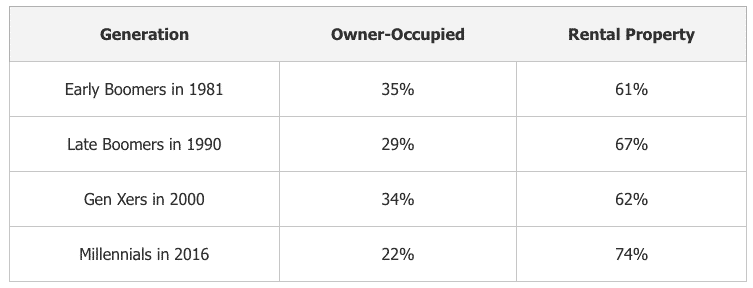
What you’ll note is that they rent more and own less than prior generations. Not only are they renting more, but they’re also renting longer than prior generations. And it’s only getting worse.
Single-family home prices have skyrocketed at a much faster pace than wages. And inflation coupled with a supply shortage is making it worse every day. More people are being priced out of owning their homes as we are well on our way to becoming a renter nation.
Easier to Finance Your Investment
Investing in multifamily real estate can give you access to commercial lending. These larger apartment buildings are so stable that they qualify for non-recourse debt. That means that the owners don’t have to qualify for the debt. This is very different from residential financing (single-family homes, duplexes, triplexes, and quads).
Typically residential debt is full-recourse debt. That means the owner personally guarantees the mortgage. The bank can go after them and their assets should they default. The debt also shows up on their credit report and is counted toward their debt-to-income ratio. Therefore, it encumbers their credit, making it harder to get future debt.
None of these things are an issue with non-recourse commercial lending. The asset itself secures the loan. Foreclosure on that asset is the bank’s only remedy in default. It doesn’t go on one’s credit report or encumbers their credit. So there is no doubt that financing with non-recourse debt is easier and safer for those individuals who invest in multifamily real estate.
Scalability of Your Portfolio
Multifamily real estate investing is scalable. Many of us started out investing in small residential properties. However, the most successful transitioned quickly into bigger unit counts and scaled their investment portfolio.
As I stated earlier, non-recourse residential financing encumbers your credit. It impacts your debt-to-income ratio and therefore limits how much debt you can acquire. After I had acquired my eighth rental property, my mortgage broker informed me that he could likely get me a couple more loans, but after that, it would be next to impossible for me to qualify.
He suggested that I consider moving on to investing in multifamily real estate. With the larger properties, I could scale. Financing would be easier to obtain and it would come without debt-to-income limits. Once I understood this, I went from owning 32 residential units to being a partial owner in thousands of multifamily property units.
Fractional Investments
Now, what do I mean by, “partial owner?” There are a lot of advantages that investing in multifamily real estate has over residential real estate. Going big typically means economies of scale, stable income, and professional property management. But buying multimillion-dollar properties means multimillion-dollar down payments.
For that reason, most people are priced out of these investments. Historically, only institutional investors and the very wealthy were able to invest in multifamily real estate. But that changed with fractional real estate investing.
Fractional investing is when like-minded investors pool their money together to buy some of the biggest and best apartment buildings and commercial real estate properties all over the world. It has opened this investment class for direct ownership to accredited investors who would otherwise be priced out of the market.
The vast majority of these individuals commit their money passively as limited partners with a private real estate investment company or syndicator. Not all syndicators are equal in their experience and expertise. So it’s important to vet any company thoroughly prior to investing.
Tax Benefits of Real Estate
Investing in multifamily real estate comes with substantial tax benefits. The cornerstone of those tax benefits is property depreciation. Depreciation is the paper loss that the IRS allows you to claim annually even when your property is appreciating in value.
That depreciation can be used against the income one generates from the property to offset the taxes that would normally be due that calendar year. And if one has excess depreciation in a given year, they can bank that paper loss and use it in future years.
To better understand how depreciation works, let’s look at an example. Historically, depreciation is calculated over 27.5 years for resident-occupied real estate and 39 years for non-resident-occupied commercial buildings.
So if a group purchased a multifamily property that is worth $27.5 million after the land value has been subtracted out (land can’t be depreciated), they would divide that number by 27.5 years.
$27.5 million (asset value) / 27.5 years = $1 million depreciation annually
As one can see from the example above, this property will give $1 million in paper losses to take against actual gains each and every year for the next 27.5 years. Depreciation is quite flexible too. You can accelerate it to front-load the depreciation benefit. And currently, you can access bonus depreciation as well.
Depreciation is an important wealth acceleration tax deferral tool. Additionally, one can utilize tax-free refinances, 1031 Exchanges, and the basis reset upon death to manage one’s tax burdens. The more you dive into the subject of tax benefits from real estate, the more you’ll understand just how beneficial real estate really is.
Considerations When Investing in Multifamily Real Estate
Many first-time investors think that the key to investing in multifamily real estate is to find a “good deal” in your local neighborhood and snatch it up before someone else does. However, that’s not how the professional investor approaches commercial real estate.
Location of the Property
Professional real estate investors love good deals just as much as anyone else. However, they also realize that a good deal typically means that something is wrong. Sometimes it’s within their capabilities to fix those problems and sometimes it’s something they can’t fix.
Be very careful of “good deal” properties that can’t be fixed. Despite the low price, those properties typically aren’t good deals. That’s why one should vet the markets and submarkets they want to invest in long before they start looking at properties.
Markets with declining populations, environmental issues, and high unemployment rates are all examples of problems one can’t fix. Look for markets with long-term historical population growth, diversity of job centers, healthy job growth, and favorable landlord-tenant laws.
But even in the best of markets, there will be submarkets you want to stay away from. High-crime areas with poor schools are more examples of problems you can’t fix. You want to own properties in submarkets with lower crime and good schools. Owning desirable properties in desirable areas will create demand that will make management easier.
Number of Units Within the Property
Once the right markets and submarkets have been selected, it’s important to match one’s capabilities and strategy with the right property. What is the number of units one should target? What is the right unit mix? Who is the target market? What are the fit and finish renters expect in that submarket? And do they have the right amenities stack?
These are all questions that one can answer by shopping their competitors. The vast majority of future renters already live within five miles of the target property. So studying those properties can give one a wealth of information to utilize with the property.
How to Analyze Real Estate Investment Opportunities
Once one knows their target markets and submarkets, they should match their capabilities with a solid business plan. Once sources of capital have been secured, it’s time to look for investment properties.
Much of this initial analysis can be done remotely. Prospective investors can analyze crime stats, school scores, proximity to job centers, and entertainment centers among other things. The current rent rolls and at least two years’ worth of financial statements need to be obtained to do a thorough underwriting.
With those numbers, one can underwrite the existing property. Start with the current numbers and project out (in our case ten years) what you believe the rent growth will be, along with occupancy rates, and several other factors over that time period. The numbers can be used to calculate the cap rate (also known as the capitalization rate) and determine if it’s consistent with market norms.
Remember that forecasting isn’t exact, but it’s also not guessing. One needs to compare historical factors with current trends and future projections to arrive at the most accurate model possible.
When evaluating a property it’s also crucial to consider the number of vacant units, the historical vacancy rate of the target market, as well as factoring in a buffer into your underwriting to account for unexpected downturns.
Retrospectively, if you find that your projected numbers routinely vary from actual numbers then the underwriting is either too conservative or too aggressive. And one should adjust accordingly.
Our philosophy is that it’s always better to be too conservative in your underwriting than it is to be too aggressive. Risk management demands a conservative underwriting approach.
Potential Costs vs. Potential Returns
Investing in multifamily real estate is a business. And just like all businesses, it has expenses. There are things like:
- Maintenance and Repairs
- Advertising and Promotion
- Administrative Expenses
- Payroll
- Management Fees
- Property Tax
- Insurance
- Capital Improvements
- Debt Service
What’s left after one pays these expenses is your profit which can be held for future improvements, replenish reserve accounts, or distributed in the form of cash flow/yield.
Those profits will primarily come from rents. However, there are other sources of income that one can derive from investing in multifamily real estate. A few of these items that have become usual and standard in many markets are:
- Application Fees
- Late Fees
- Pet Fees
- Valet Trash
- Utilities Reimbursement (RUBS)
Working with the Professionals at 37th Parallel to Build Your Portfolio
Every year, the analytics and advisory firm Gallup performs a survey looking to see what Americans feel is the best long-term investment. And year after year, real estate comes in as the number one choice.
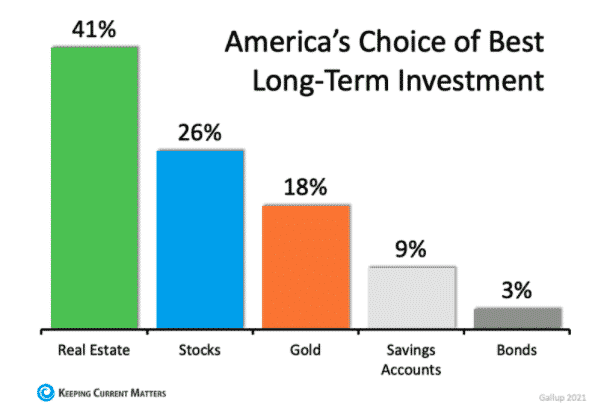
People know that real estate is a proven pathway to wealth and yet many forgo this asset class. They believe that investing in multifamily real estate means that they have to become a landlord who manages tenants, toilets, and takes 2:00 a.m. phone calls. They feel they don’t have the time, energy, or expertise to invest successfully.
But they don’t have to invest actively. Instead, they can ride sidecar as a passive fractional investor leveraging the experience and expertise of a professional private real estate asset manager.
Since its inception in 2008, 37th Parallel Properties has positioned itself as an industry leader that accredited investors know and trust to make them money investing in multifamily real estate.
Our proven, conservative acquisitions, operations, and dispositions models have a 100% profitable track record for investors across multiple properties in multiple markets through multiple economic climates including COVID-19.
How to Get Started as a Real Estate Investor
Multifamily real estate investing can be done actively or passively. For those looking to get their hands dirty and go it alone, the most common starting point is owning residential real estate (single-family homes, duplexes, triplexes, and quads).
For those who see merit in the economies of scale and stability that comes from larger properties, a more passive, hands-off approach that leverages the experience and expertise of professionals is likely more appealing.
And that’s what we do. We help investors add profitable multifamily real estate investment to their portfolio without having to become a landlord.
After speaking with thousands of investors since 2008, we know that our clientele are looking for investments that are safe, stable, and based on hard assets. They appreciate the 37th Parallel Properties Permanent Wealth Architecture. It outlines our philosophy and order of priorities:
- Principal Safety – The security of your original investment is our primary focus
- Stable Cash Returns – Our investments are structured to generate quarterly income
- Increasing Cash Returns – Your income may increase over time due to rent increases, expense reductions, and property improvements
- Growing Equity – By growing rent, improving the property, and reducing the principal, your equity can increase steadily over time
- Opportunity to Accelerate – To accelerate your wealth, your investments will have the ability to “cascade up,” increasing Cash Yield and Equity Growth at liquidity events every 4 to 6 years
If you’re an accredited investor and that philosophy aligns with your own, then getting started with 37th Parallel isn’t difficult. It all starts with a no-obligation introductory phone call. To schedule that call, simply scroll down to the bottom and click the link.
When Is The Best Time to Invest in the Real Estate Market?
Investing in commercial real estate is less about timing the market than it is about solid fundamentals. Apartment investing is a stable, non-volatile asset class that represents an investment in the basic need of shelter. And historically speaking, it has done well in both good and bad economic times (including the COVID-19 pandemic).
So as long as you believe that people will continue to need a roof over their heads and the assets you’re looking at will generate stable cash flow on day one (with the potential to grow equity over time) it’s always a good time to invest in apartments.
Providing Multifamily Acquisition and Management Services
37th Parallel Properties provides a platform for those interested in investing in multifamily real estate without becoming a landlord. We handle the acquisition, operations, and dispositions of these investment properties.
Our conservative model has produced nearly two decades’ worth of a 100% profitable track record. That consistency along with our transparency has given investors an opportunity to park their real estate investment allocation with a proven syndicator that gets results.
Our Goal is to Help Our Clients Reach Permanent Wealth
Investing in multifamily real estate is an important wealth-generating asset class. We specialize in apartment investments, it’s all we do. And our track record speaks for itself. If you’d like to learn more about our investments or join our community of investors, simply click the link below.


